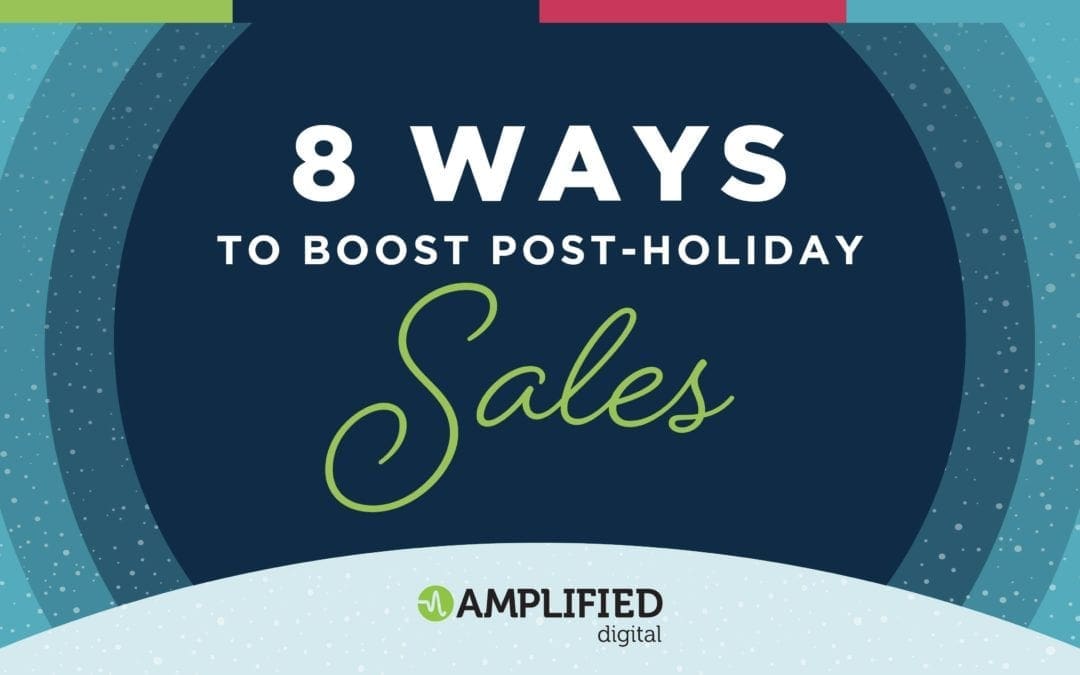The holiday season usually brings a spike in sales for most companies. While this spike is a great thing for businesses, it is often followed by a decline in customer spending during the post-holiday season. To combat that sales slump, Amplified has put together a list of 8 ways to boost post-holiday sales and keep customers buying through the start of the New Year.
Bump Up Your Remarketing Efforts
Remarketing may already be a part of your overall marketing plan, but the post-holiday period is a great time to ramp up those efforts. The holiday season brings an influx of traffic to your website and, whether they made a purchase from you or not, these visitors have shown an interest in your company. By increasing your remarketing efforts at the start of the New Year, you can capitalize on these website visitors and encourage them to make a purchase.
Start a New Sale
Most businesses offer many different discounts and promotions to drive sales during the holidays. Although, as a business owner, you may feel tired of the sales, your customers aren’t. Offering a new sale or discount at the start of the year is an easy way to encourage your customers to make purchases from your business. Winter clearance, BOGO offers, or a free gift with purchase are all great ideas for post-holiday promotions.
Offer Past Holiday Shoppers Special Discounts in January
Thank customers who spent money with you during the holidays by offering them a special discount to use in January. These discounts or promotions can act as a flash sale for your previous customers and encourage them to make another purchase from your business.
Release a New Product
Instead of focusing on restocking your inventory after the holidays, try releasing a new product or service to create some excitement around your business. New products and services are a great way to get customers visiting your website or store, therefore creating more opportunity for revenue.
Utilize Any Email Addresses Gather During the Holidays
The holiday sales spike should have brought you a plethora of new email addresses to capitalize on. Add these new email addresses to your database as soon as possible and begin marketing to them. Since these email addresses are from people who have already engaged with your business, they will be a great target for any of your January promotional efforts.
Make the Most of Social Media
The start of the New Year is a great time to double check your company’s social media presence. Make sure there aren’t any holiday graphics lingering on your page, listen to what recent customers are saying about your business, and schedule posts to stay top-of-mind to potential buyers. You can also reward customers for being connected with your business by offering exclusive deals and coupons on your social media platforms.
Capitalize on New Year’s Resolutions
At the start of the year, many customers often shift focus to their New Year’s resolutions and ways they can better themselves. Switch up your marketing strategy and capitalize on the “New Year, New You” mindset by making the connection of how your business can help achieve your customers’ resolutions.
Keep Your Marketing Strategy Going
After a hectic holiday season, many businesses are exhausted and end up putting their marketing strategy on the back burner. But, customers are still out there listening to your brand. Keep your marketing strategy going strong through the beginning of the New Year and capitalize on a time when a lot of businesses go silent.
We hope these ideas gave your some inspiration to beat the post-holiday sales slump and start your year on the right foot. Share how you plan to continue your sales into the New Year by tagging us on social! If you’re looking for help to act on some of these tips, our experienced team is here to help guide you and your business. Contact Amplified Digital Agency today.


